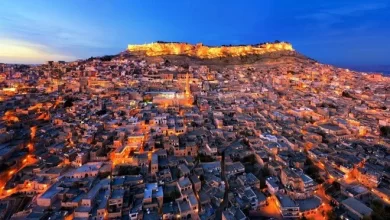Places in Turkey on the UNESCO World Heritage List

Turkey, a signatory to the Convention on the Protection of World Heritage in 1982, was included in the list for the first time in 1985 with the historical sites of Istanbul, Divriği Great Mosque/Darüşşifa and Göreme National Park/Cappadocia. Today, Turkey has a total of 19 registered heritage sites, 17 cultural and 2 mixed.

Divriği Great Mosque And Darüşşifa (Sivas) 1985
The earliest settlement in and around Divriği dates back to the Hittite Period. The mosque was built by Ahmet Shah and his wife Turan Melek in 1228-1229 during the Mengücekoğulları Period. Considered a masterpiece of Islamic architecture, it consists of a mosque with two domed tombs and a hospital adjacent to it.
Divriği Great Mosque and Darüşşifa, located in Sivas, has been on the UNESCO World Heritage List since 1985 with its architectural features and rich examples of Anatolian traditional stonemasonry.

Historical Sites Of Istanbul (Istanbul) 1985
The Historical Sites of Istanbul, also known as the Historical Peninsula, surrounded by the Marmara Sea, the Bosphorus and the Golden Horn, were included in the UNESCO World Heritage List in 1985.
The historical sites of Istanbul, the only city in the world built on two continents, consist of four main areas: Sultanahmet Archaeological Park, Süleymaniye Conservation Area, Zeyrek Conservation Area and Land Walls Conservation Area.
Istanbul, which has been home to various cultures since 6500 BC, was also the capital of the Eastern Roman and Ottoman empires. For this reason, it is a city where mosques, churches and synagogues can be seen side by side. Istanbul is a capital of history and culture with its magnificent Blue Mosque, Hagia Sophia with its unique mosaics, Topkapi Palace, the administrative center of the Ottoman Empire, Suleymaniye Mosque, Mimar Sinan’s masterpiece, Basilica Cistern, Hagia Irene Church, city walls and wooden houses.
Hagia Sophia, one of the most important historical monuments of Istanbul, was built between 532-537. Hagia Sophia, one of the oldest monumental temples in the world, continues its existence as a mosque today.
The Blue Mosque, located directly opposite the Hagia Sophia, is one of the most magnificent buildings in Istanbul with its domes, six minarets and architecture.
Topkapi Palace was the administrative, educational and artistic center of the Ottoman Empire for about 380 years. The palace serves as a museum.The Basilica Cistern was built by Justinian I in 542 AD to meet the needs of the Great Palace. Inside the cistern is the head of Medusa, a figure from Greek Mythology.
Hundreds of mansions, wooden houses and public buildings in Zeyrek and Süleymaniye Conservation Areas continue to exist today.
Süleymaniye Mosque and Complex, one of the most important works of Mimar Sinan, was built between 1550-1557.

Goreme National Park And Cappadocia (Nevsehir)
Göreme National Park and Cappadocia in Nevşehir was included in the UNESCO World Heritage List in 1985 in seven sections: Göreme National Park, Derinkuyu Underground City, Kaymaklı Underground City, Karlık Church, St. Theodore Church, Karain Dovecotes and Soğanlı Archaeological Site.
The most striking feature of the region is the large number of fairy chimneys formed by the effect of wind and rainwater. Cappadocia, which was formed over millions of years by the erosion of the tuffs covering the region as a result of volcanic eruptions by wind and water, has been a continuous settlement area since the Paleolithic Period with its geological structure and has witnessed the history of Anatolia.
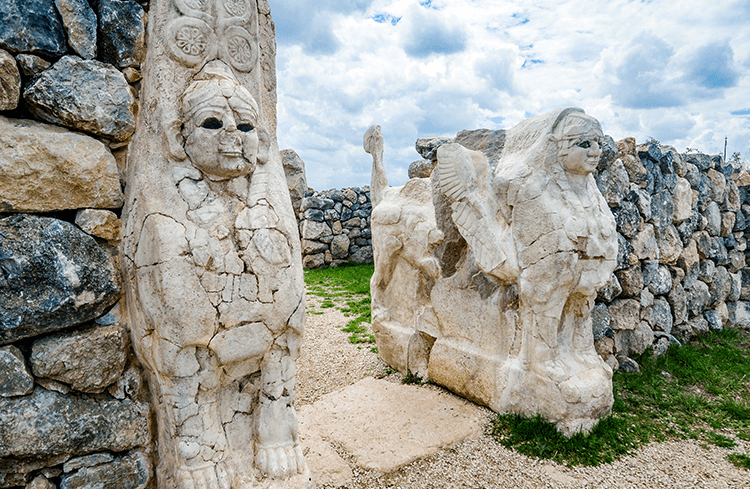
Hattusa: Hittite Capital (Çorum) 1986
Hattusa, the capital of the Hittite civilization founded in 1650 BC, has been on the UNESCO World Heritage List since 1986.
An open-air archaeological museum, Hattusa is located in Boğazköy, Çorum. It consists of two areas, the Lower City and the Upper City. In the Lower City there are civilian living areas with the Great Temple rising in the center. In the Upper City, there is the Temples Quarter, which houses many temples. The King’s Gate and Lion Gate in the region are among the most beautiful examples of Hittite stonework.

Mount Nemrut (Adıyaman) 1987
The 2,150-meter-high Mount Nemrut, located in Kahta, Adıyaman, is one of the most magnificent ruins of the Hellenistic Period with the tomb of Commagene King Antiochos I and monumental statues on its slopes. The monumental ruins are located on the east, west and north terraces of Mount Nemrut. Since the eastern terrace is considered sacred, the most important sculptures and architectural remains are located in this section.
The giant statues, which are well preserved and up to ten meters high, are made of limestone blocks. Although its existence is known historically, the king’s tomb has not yet been discovered.
Mount Nemrut was included in the UNESCO World Heritage List as a cultural asset in 1987.
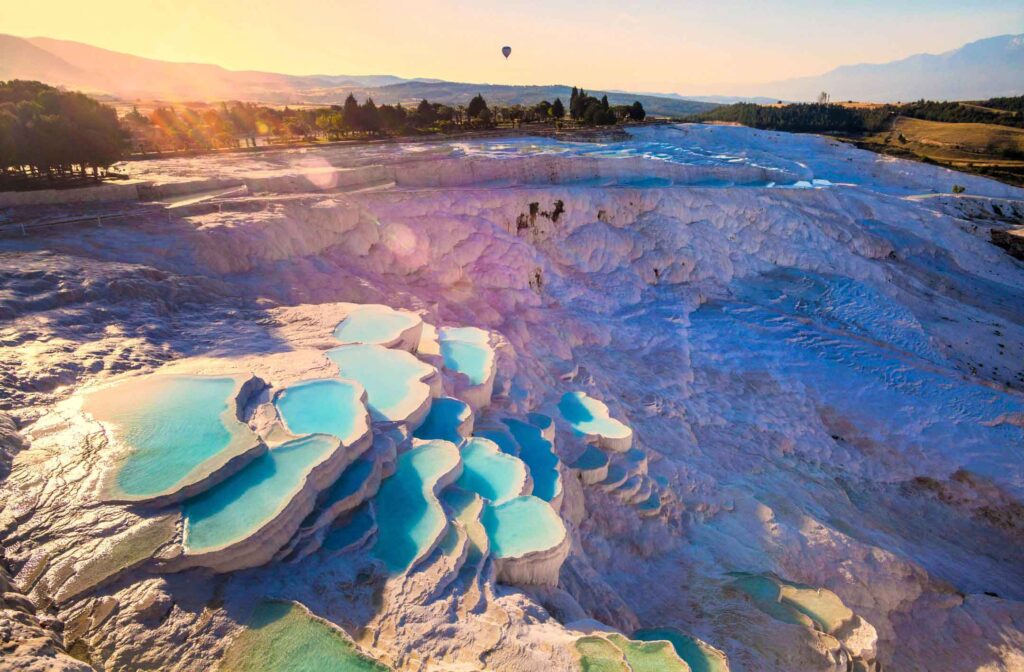
Hieropolis-pamukkale (Denizli) 1988 (Mixed Heritage Site)
The history of Pamukkale Hierapolis Ancient City, which stands in all its glory right next to Pamukkale Travertines, where the white travertines formed as a result of the contact of thermal waters with air form gradual shapes and form shaped pools in places, dates back to the Roman Period.
Located 17 kilometers north of Denizli, Pamukkale Travertines and the Ancient City of Hierapolis were included in the UNESCO World Heritage List in 1988.
Hierapolis Ancient City was built on four large islands. Some of the important structures of the ancient city are the Great Bath Complex, Frontinus Street, Trade Agora, North Byzantine Gate, South Byzantine Gate, Gymnasium, Tritonian Fountain Building, Ionic Column Headed House Latrina, Apollo Sanctuary, Water Canals and Nympheums, Plutonium, Cathedral, St. Philippus and Walls.
During the reign of the Kingdom of Pergamon, Hierapolis and the Travertines served as a thermal health center, and its believed healing springs were visited by people seeking health and beauty for thousands of years.
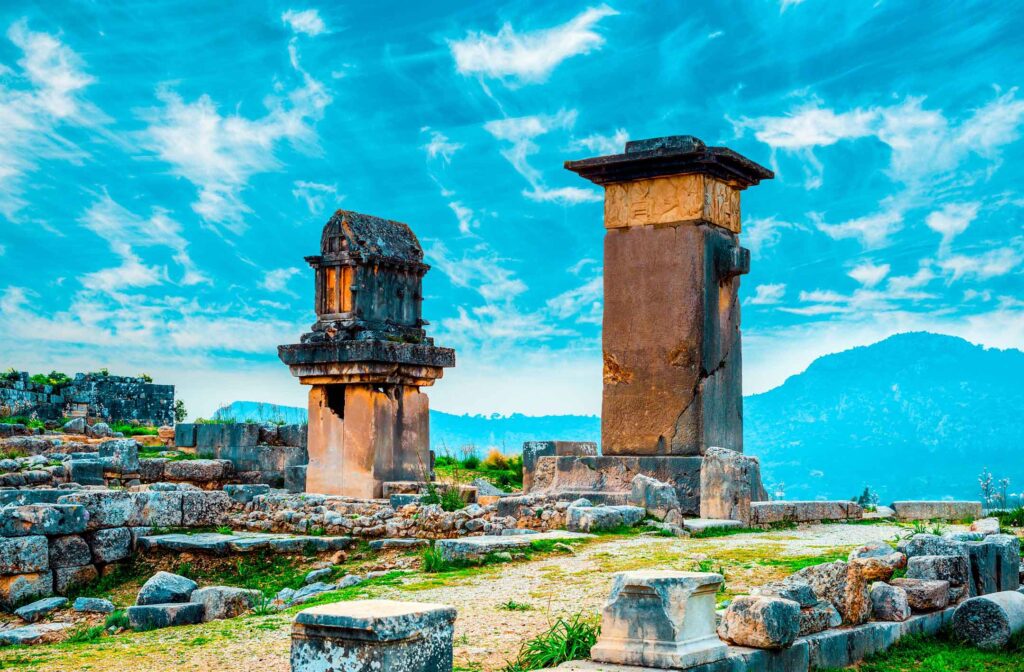
Xanthos (Muğla)
Dating back to 3000 BC, Xanthos is known as the largest administrative center and capital of Lycia in ancient times. Letoon is one of the most important religious centers of the same period. Xanthos and Letoon were included in the UNESCO World Heritage List in 1988 because they are important values of world heritage in terms of their archaeological values.
There is a distance of approximately 4 kilometers between the settlements of Xanthos and Letoon, where the stone inscriptions with the longest and most important texts in the Lycian language are located. Xanthos is 45 kilometers from Fethiye, on the Muğla-Antalya provincial border. The 2,200-person capacity Xanthos Theater was built in the Hellenistic Period and renovated during the Roman Period.
Discovered in 1840, Letoon sanctuary has a theater, basilica, inscriptions, three temples, portico and an L-shaped stoa. The largest of the 3 temples, the Temple of Leto, is located in the western region, while the Temple of Apollo, which attracts attention with its foundations made of wood, is located in the eastern region. The lower parts of the Temple of Artemis, located in the middle of both temples, are under water today due to the increase in the water level.
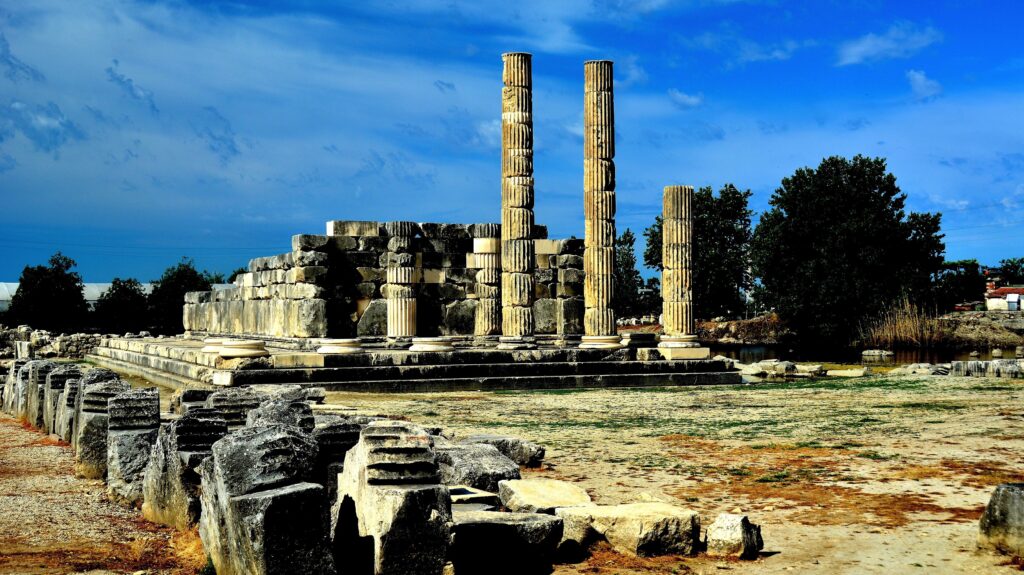
Letoon (Antalya)
Dating back to 3000 BC, Xanthos is known as the largest administrative center and capital of Lycia in ancient times. Letoon is one of the most important religious centers of the same period. Xanthos and Letoon were included in the UNESCO World Heritage List in 1988 because they are important values of world heritage in terms of their archaeological values.
There is a distance of approximately 4 kilometers between the settlements of Xanthos and Letoon, where the stone inscriptions with the longest and most important texts in the Lycian language are located. Xanthos is 45 kilometers from Fethiye, on the Muğla-Antalya provincial border. The 2,200-person capacity Xanthos Theater was built in the Hellenistic Period and renovated during the Roman Period.
Discovered in 1840, Letoon sanctuary has a theater, basilica, inscriptions, three temples, portico and an L-shaped stoa. The largest of the 3 temples, the Temple of Leto, is located in the western region, while the Temple of Apollo, which attracts attention with its foundations made of wood, is located in the eastern region. The lower parts of the Temple of Artemis, located in the middle of both temples, are under water today due to the increase in the water level.
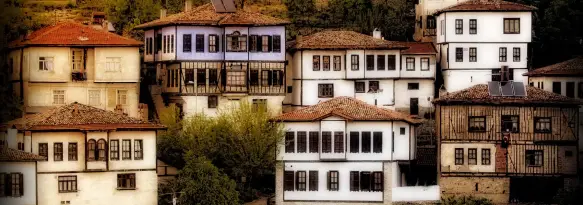
Safranbolu City (Karabük) 1994
Safranbolu in Karabük was included in the UNESCO World Heritage List in 1994.
Located on the road connecting the Black Sea coast to Western, Northern and Central Anatolia, the historical city of Safranbolu has been inhabited since ancient times.
Safranbolu, whose history dates back to 3000 BC, is located in the region where the Hittites, Phrygians, Lydians, Persians, Hellenistic Kingdoms, Romans, Seljuks, Cobanoğulları, Candaroğulları and Ottoman Empire ruled respectively.
It gained its present architectural structure in the 17th and 18th centuries. About 800 of the 2000 Safranbolu houses, which are the most beautiful examples of Ottoman civil architecture, are under legal protection. Some of them are organized as museums, and especially the wood-embroidered ceilings draw attention.
Saffron, one of the most expensive spices in the world, grows in Safranbolu. Saffron, which requires great effort to grow, is used in food, medicine and cosmetics sectors.
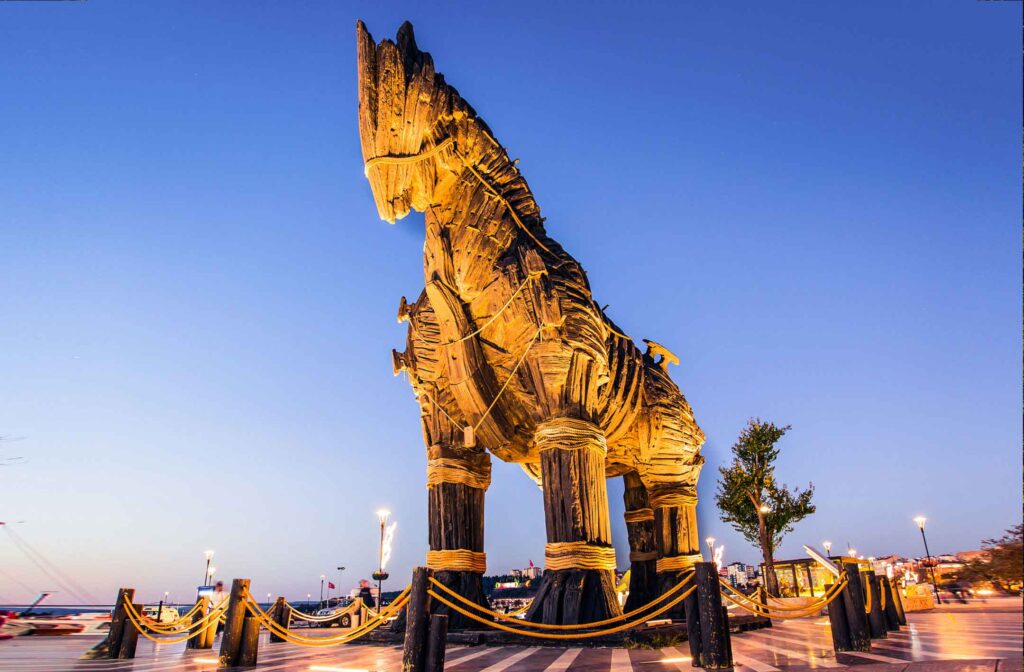
Troy Archaeological Site (Çanakkale) 1998
The ancient city of Troy, one of the world’s best-known archaeological sites dating back to 3000 BC, was included in the UNESCO World Heritage List in 1998.
The area, mentioned in Homer’s Iliad Epic, is also known as the site of the Trojan War. Excavations since 1871 have revealed that the city was built and destroyed many times, and forty-two building levels were uncovered in addition to nine city layers. In the excavations that continued in later periods, the theater, baths, an advanced sewage system and building foundations were found.
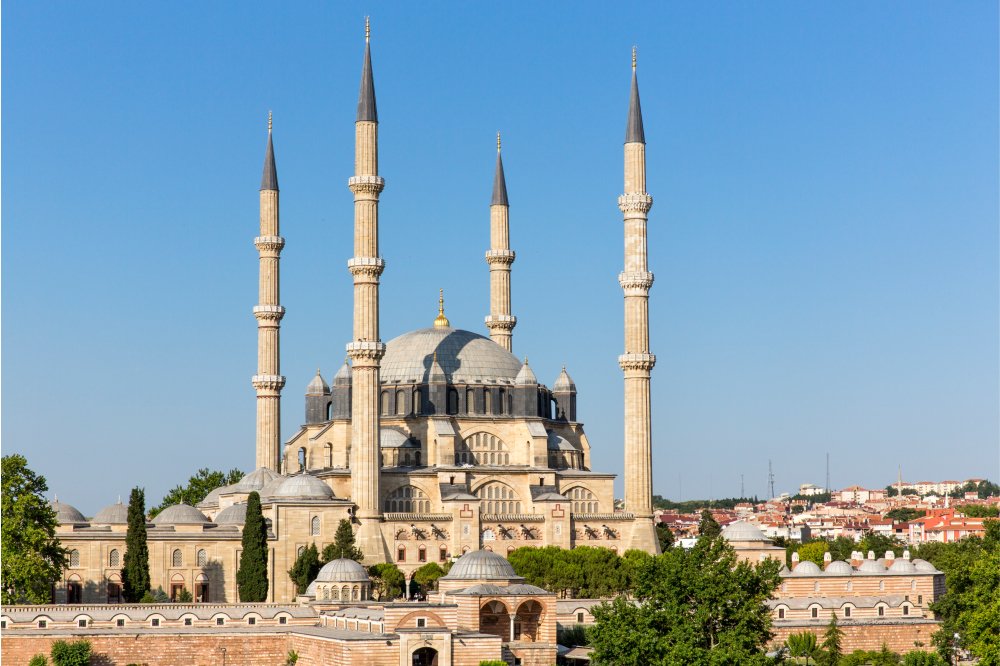
Edirne Selimiye Mosque And Complex (Edirne) 2011
Selimiye Mosque and Complex, the most important monumental work of Edirne, was built in the 16th century on behalf of Sultan Selim II. It was started in 1568 and completed in 1575.
The Mosque and Complex is the masterpiece of Mimar Sinan, one of the most important architects of the Ottoman Empire, and is one of the most magnificent buildings of the period.
The mosque has a slender and elegant form with four minarets and a majestic dome. Stone, marble, wood and mother-of-pearl were used in its interior design. It is a masterpiece where architecture and art are intertwined with Iznik tile motifs, pencil works on the dome and arches, marble-paved courtyard, library of manuscripts and educational areas.
Selimiye Mosque and Complex was included in the UNESCO World Heritage List in 2011.
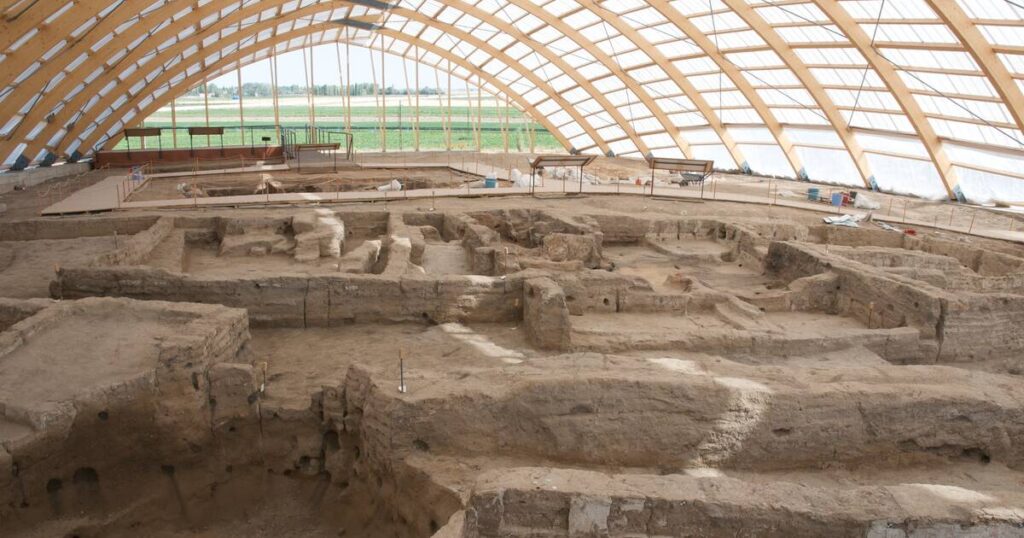
Çatalhöyük Neolithic Site (Konya) 2012
Çatalhöyük, located in Çumra district of Konya province, is known as one of the oldest settlements belonging to the Neolithic Period. Discovered in 1958, Çatalhöyük sheds light on human history with its unique finds such as the first house architecture and the first landscape painting.
Scientific excavations since its discovery continue today. The finds in Çatalhöyük date back to 7400 BC.
The architecture of the mound is quite interesting. When a family’s lifespan in a house expired, the house was filled with earth and a new house was built on top of it. This resulted in a mound with eighteen floors and a height of twenty-one meters. Adobe, pieces of wood, reed and clay soil were used in the construction of the buildings. The houses are single storeyed and the entrances to the houses are provided by a staircase from the roof. The houses consist of a room and a storage room. After the plaster on the walls was painted white, human and animal figures were depicted.
Çatalhöyük Neolithic City was included in the UNESCO World Heritage List in 2012.
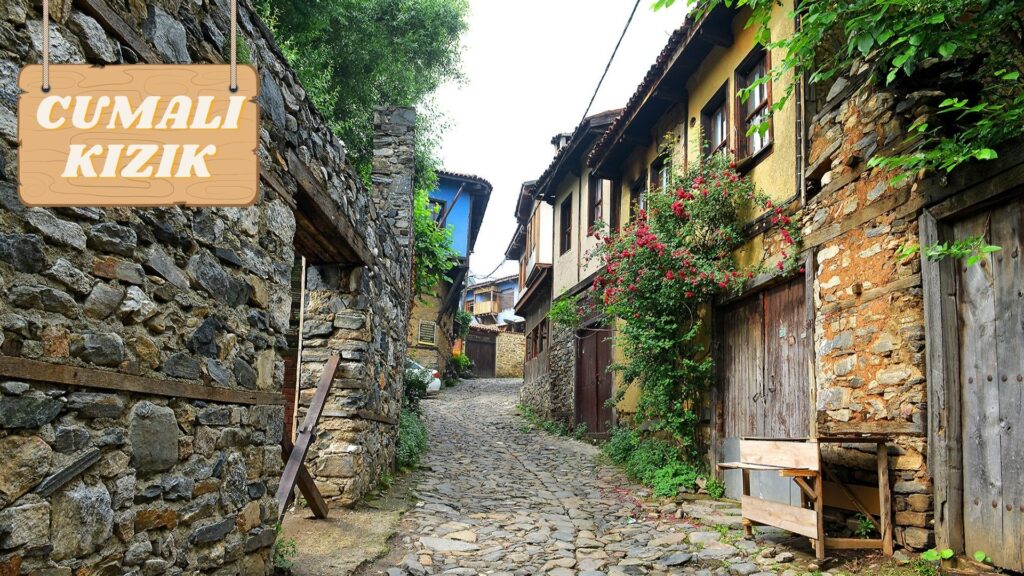
Bursa And Cumalıkızık: The Birth Of The Ottoman Empire (Bursa) 2014
The heritage site in Bursa consists of six locations: the Orhangazi Complex and its surroundings, the Khan District, the Hüdavendigar (Murad I) Complex, the Yıldırım (Bayezid I) Complex, the Yeşil (Mehmed I) Complex, the Muradiye (Murad II) Complex and the Cumalıkızık Village.
Since Bursa was the first capital of the Ottoman Empire, it is adorned with complexes. In addition, due to its position as a trade center, it became the center of the city’s economy with the inns, bedesten and bazaars built in the Khan District.
Cumalıkızık Village and other villages around it made important contributions to the transition from principality to empire thanks to their economic relations with Bursa city center. Cumalıkızık is a good example of the early Ottoman way of life with its vibrant commercial culture and rural life close to the city.
Bursa and Cumalıkızık: The Birth of the Ottoman Empire was inscribed on the UNESCO World Heritage List in 2014.
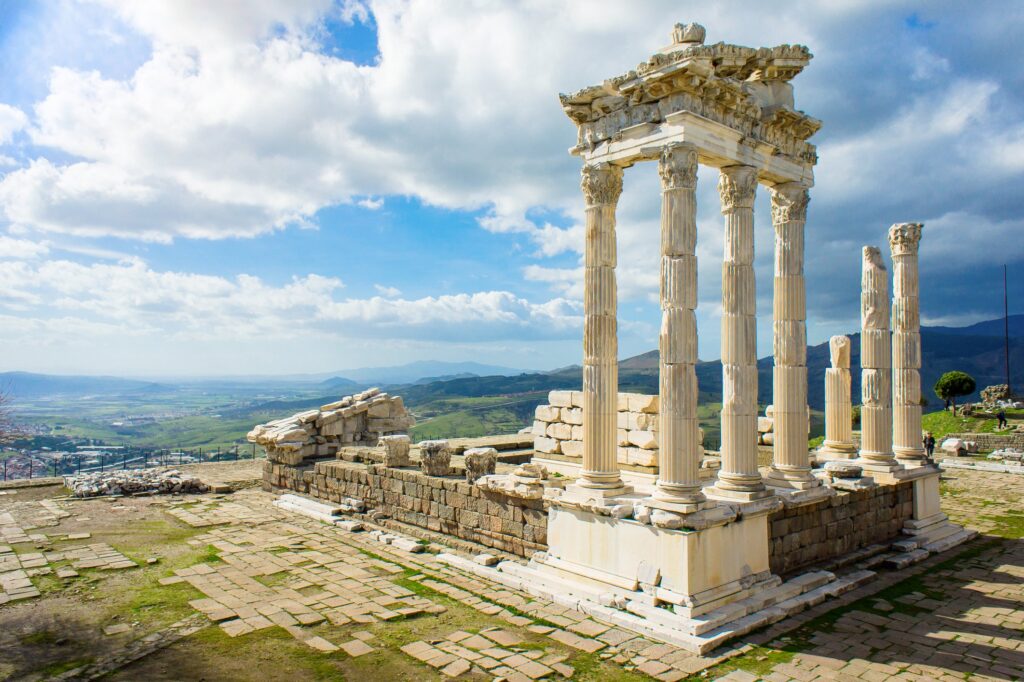
Bergama Multilayered Cultural Landscape Area (Izmir) 2014
Bergama Multilayered Cultural Landscape Area, which contains elements from Hellenistic, Roman, Eastern Roman and Ottoman Periods, consists of nine components including Pergamon (multilayered city), Cybele Sanctuary, İlyas Tepe, Yağma Tepe, Binary, Rabbit Tepe, X Tepe, A Tepe and Maltepe Tumuli.
As the capital of the Hellenistic Kingdom of Pergamon, the city was an important center of education. Bergama, which later became the capital of the Asiatic Province of the Roman Empire, was home to the Asclepion, one of the most important health centers of the period.
The city, which contains many elements of the Hellenistic and Roman periods along with the cultural landscape around it, has also preserved its importance with many mosques, inns, baths and commercial centers belonging to the Ottoman Period architecture spread over the layers of Roman and Eastern Roman periods.
Bergama Multilayered Cultural Landscape Area in Izmir was included in the UNESCO World Heritage List in 2014.
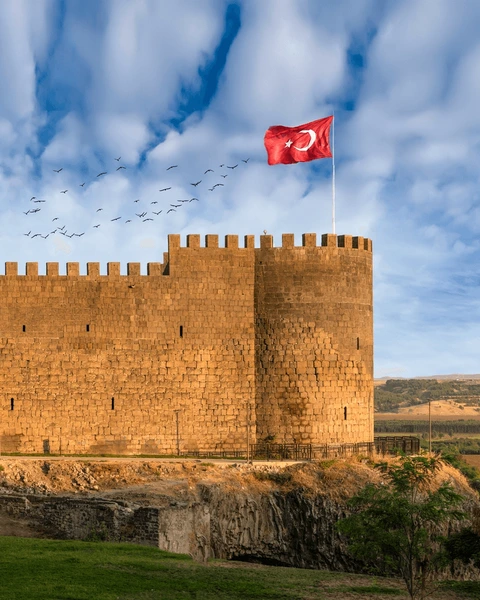
Cultural Landscape Of Diyarbakır Castle And Hevsel Gardens (Diyarbakır) 2015
Diyarbakır Castle and Hevsel Gardens Cultural Landscape consists of two components: Diyarbakır Walls and Hevsel Gardens. It was included in the UNESCO World Heritage List in 2015.
Diyarbakır Castle, Walls and Bastions have a historical presence of 7 thousand years. It was shaped by the civilizations that ruled in the region in line with periodic needs, but preserved its originality. The castle is one of the rare castles in the world with its magnificent reliefs and inscriptions on its bastions.
The Hevsel Gardens have existed as a garden in Diyarbakır, which bears the traces of more than 30 civilizations, for about 8 thousand years. In addition to its agricultural value, it has a cultural and historical value. The landscape created by the gardens has contributed to uninterrupted life in the city for thousands of years.
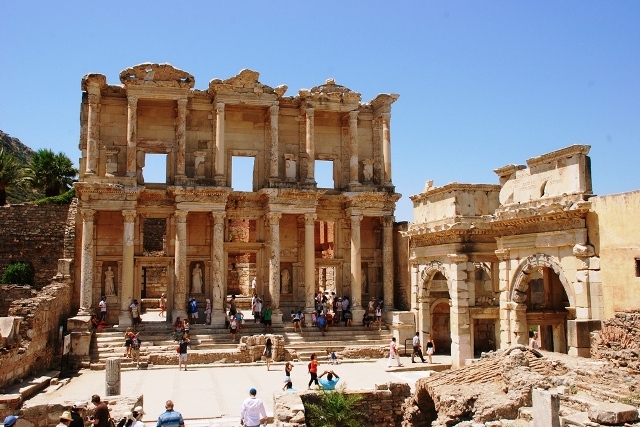
Ephesus (Izmir) 2015
In 2015, Ephesus World Heritage Site was included in the UNESCO World Heritage List and consists of four components: Çukuriçi Mound, Ayasuluk Hill (Selçuk Castle, St. John’s Basilica, Isa Bey Bath, Isa Bey Mosque and Artemision), Ancient City of Ephesus and House of Virgin Mary.
Inhabited for 9 thousand years without interruption, Ephesus is one of the most important centers of the ancient period. Starting from the prehistoric period, it has been an important port city and a cultural and commercial center throughout the Hellenistic, Roman, Eastern Roman, Principalities and Ottoman Periods.
Ephesus World Heritage Site in Izmir hosts important symbols that shed light on the architectural, urbanization and religious history of the Hellenistic and Roman Periods.
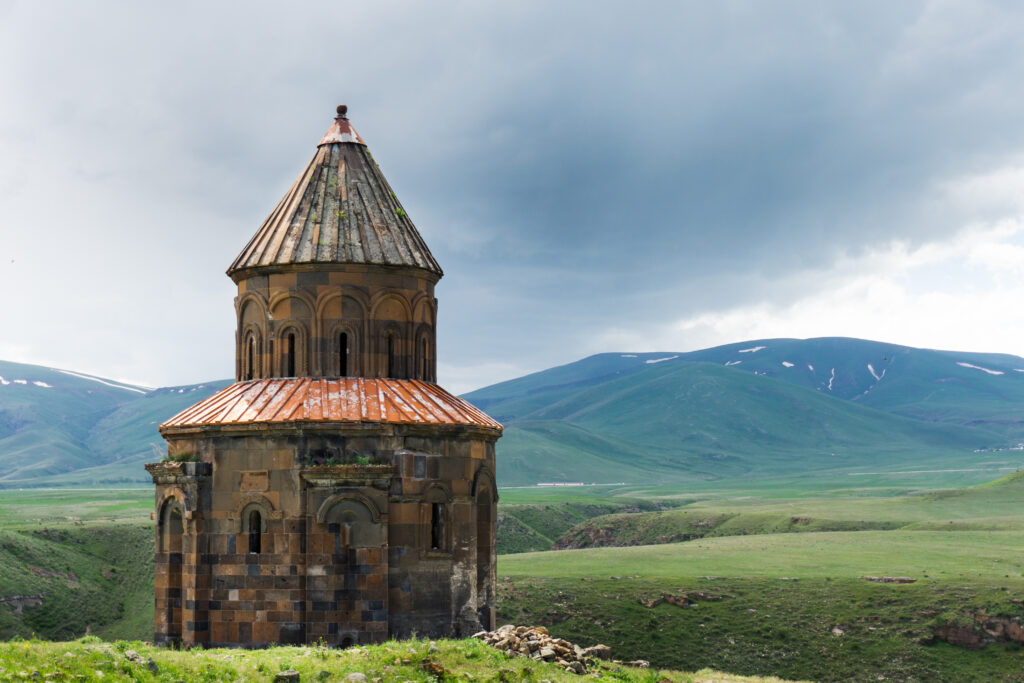
Ani Archaeological Site (Kars) 2016
Located on the border of Turkey and Armenia, Ani Archaeological Site is a multicultural settlement on the Silk Road. It was continuously inhabited from the Early Iron Age until the 16th century. Ani Archaeological Site is an area that harbors the richness of urbanism, architecture and art of the Middle Ages.
Due to its location on the Silk Road, it developed as a multicultural commercial center and became the meeting point of Armenian, Georgian, Byzantine and Seljuk cultures.
The archaeological site was inscribed on the UNESCO World Heritage List in 2016.
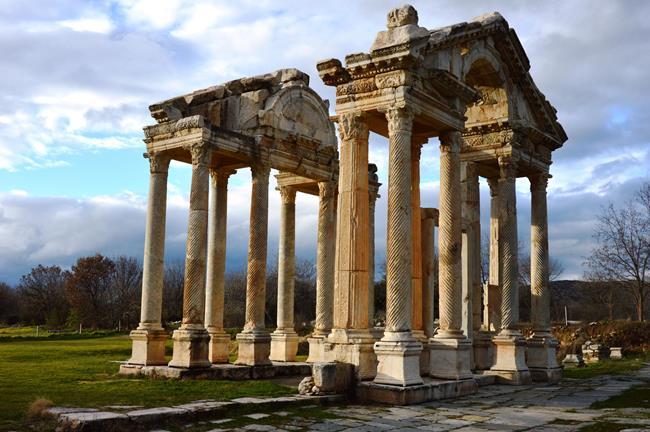
Aphrodisias (Aydin) 2017
The ancient city of Aphrodisias, located in Karacasu, Aydın, was inscribed on the UNESCO World Heritage List in 2017.
While it was a small village in the 6th century BC, it gained the status of a city-state (polis) in the 2nd century BC with the effect of intense urbanization. Aphrodisias is one of the most magnificent ancient cities of the Ancient Greek and Roman periods. The greatest source of wealth of the city, which was nourished by the natural beauties of the river basin in which it is located, was the marble quarries located on the foothills of Babadağ. Due to its proximity to the marble quarries, Aphrodisias became a high-quality production center for the art of sculpture.
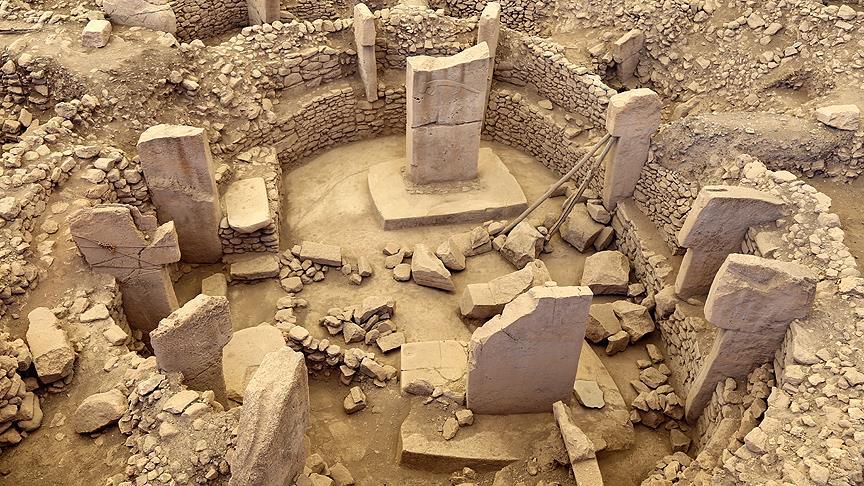
Gobekli Tepe (Sanliurfa) 2018
Göbeklitepe Archaeological Site, described as “ground zero of history”, was included in the UNESCO World Heritage List in 2018.
The archaeological site is located 18 kilometers from Şanlıurfa city center, near Örencik Village. Discovered in 1963 during a survey, the real value of the site began to emerge with the excavations started after 1994. As a result of the studies, it was discovered that the history of Göbeklitepe dates back to 12 thousand years ago.
Göbeklitepe is a cultural heritage that has changed all that is known about the lives and belief systems of prehistoric hunter-gatherer groups.
The archaeological site, consisting of round, oval and quadrangular structures, in which T-shaped one-piece obelisks made of limestone, which are thought to have been used for ceremonial purposes as a result of the researches, was a permanent center between 9600 and 8200 BC.
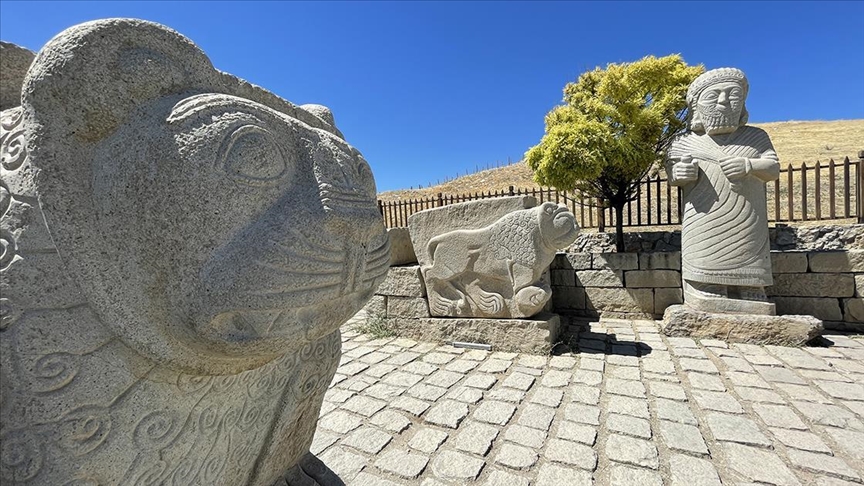
Arslantepe Mound (Malatya) 2021
Located 7 kilometers northeast of Malatya, Arslantepe Mound was included in the UNESCO World Heritage List in 2021.
Inhabited from 5000 BC to the 11th century AD, Arslantepe Mound was used as a Roman village between the 5th and 6th centuries and completed its settlement as a Byzantine Necropolis (cemetery).
Archaeological excavations revealed two lion statues and a statue of King Tarhunza from the Late Hittite Period, a stone slab reflecting the art and religious beliefs of the period, an adobe palace and temple dating back to 3000 BC, more than two thousand seal impressions and high-quality metal artifacts. Arslantepe is thought to have been an official, religious and cultural center where the aristocracy was born and the first form of state emerged.

Gordion (Ankara) 2023
The ancient city of Gordion, the capital of the Phrygians, located in Ankara’s Polatli district, was included in the UNESCO World Heritage List.
Gordion is among the rare areas in the world where settlement has been observed for the longest time. Settlement in and around the ancient city has been going on for 4,500 years without much interruption. Today, settlement continues in Yassıhöyük, adjacent to the ancient city.
Gordion is one of the most important settlements of the ancient world. It is in the same category as Athens, Rome, Pompeii, Hattusa, the capital of the Hittite civilization, and Babylon.
Around Gordion, there are tumuli, which date back to the 9th and 3rd centuries BC and consist of a tomb or cemeteries.
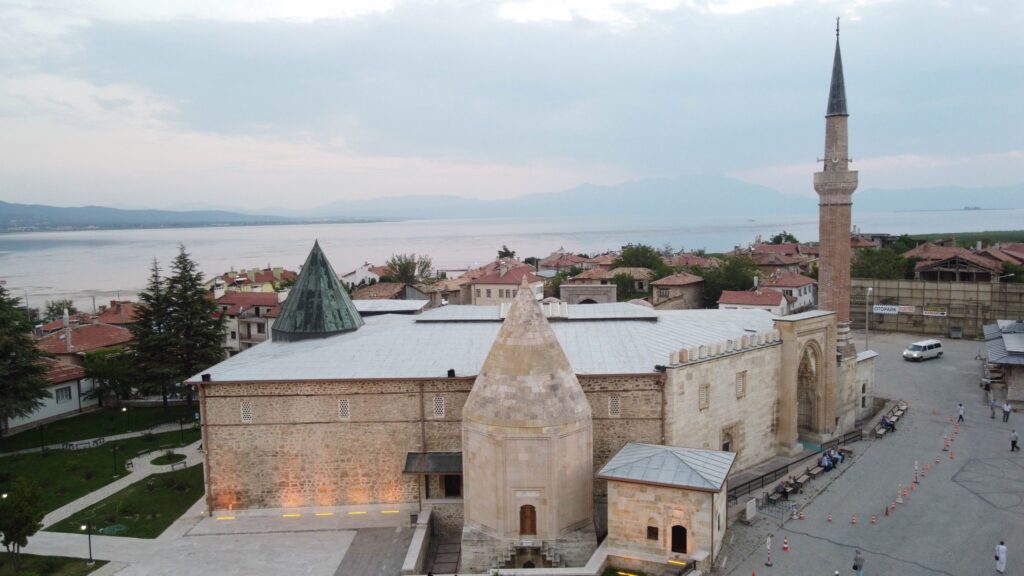
Ashrafoglu Mosque (Konya) 2023
In Konya’s Beyşehir district, Eşrefoğlu Mosque, which was built during the Anatolian Seljuk Empire and attracts attention with its wooden poles, ceiling and kündekari workmanship, was included in the UNESCO World Heritage List.
The 724-year-old mosque, whose façade is made of cut stone, is among the most advanced and large examples of mosques built in the “great mosque” style in the Seljuk tradition with its wooden ceiling resting on 48 wooden poles, wooden and tile decorations, minbar and bey mahfili made with kündekari art.

Mahmut Bey Mosque (Kastamonu) 2023
The 657-year-old Kasaba Köy Mahmut Bey Mosque, one of the wooden pole mosques of Anatolia, located in Kasaba Village on the Daday road in Kastamonu, has been inscribed on the UNESCO World Heritage List. The wooden roof of the mosque is made in the overlapping technique and is one of the rare examples in Turkey, with no metal nails or other components. One of the most striking and important elements of the mosque is its door, a marvel of carpentry. All the wooden surfaces inside the mosque were decorated with root paint and all these decorations are still in their original form.
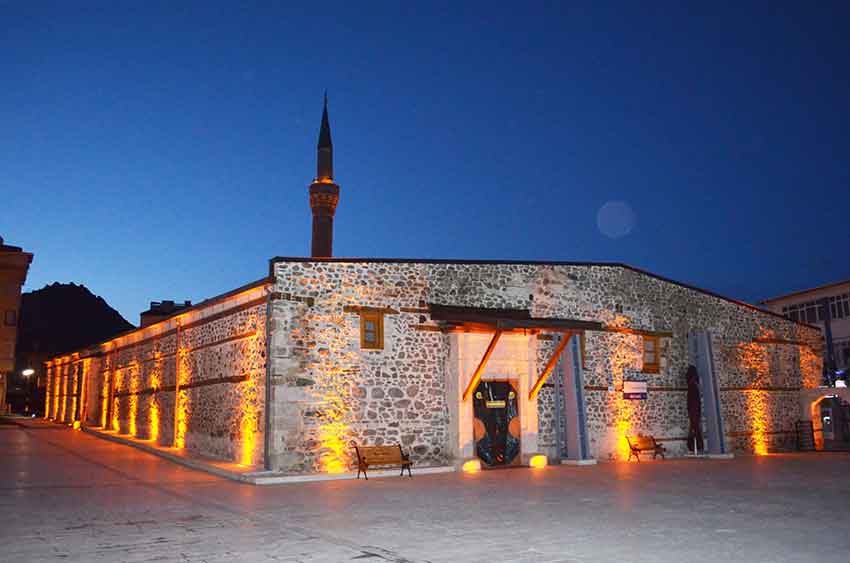
Sivrihisar Mosque (Eskisehir) 2023
In Sivrihisar district of Eskişehir, the 8-century-old Ulu Cami, one of the wooden pillar mosques of Anatolia, was included in the UNESCO World Heritage List. The roof of the mosque, which has four entrances, is supported by 67 wooden columns. The minbar of the mosque draws attention as one of the most valuable examples of the Anatolian Seljuks. It is known that this handcrafted work of art came to life with the kündekârı method without the use of nails. Sivrihisar Ulu Mosque is the largest hypostyle mosque with a capacity for 2,500 people to worship at the same time.
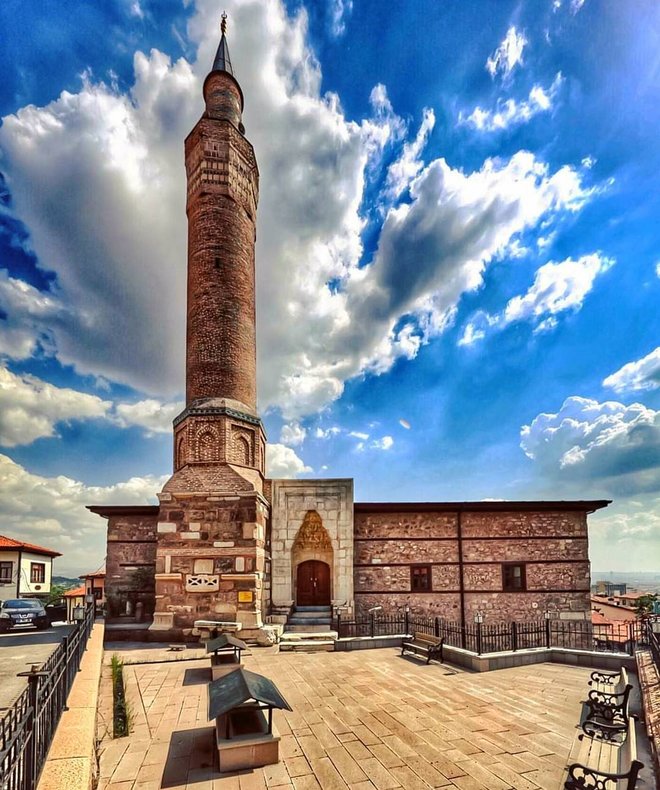
Arslanhane Mosque (Ankara) 2023
Ahi Şerefeddin (Arslanhane) Mosque, located in Ankara’s Altındağ district and dating back to the 13th century, one of Anatolia’s mosques with wooden poles, has been inscribed on the UNESCO World Heritage List. Composed of wooden materials and supports, the mosque, Ahi Şerefeddin or Arslanhane Mosque as it is popularly known, is considered one of the best examples of wood carving art. The mosque’s walnut pulpit and tile mihrabs are considered to be unique examples in Anatolia. The minbar of the mosque, made of walnut wood in kündekari technique, the materials used in the decorations, construction techniques and symbolic expansions also carry artistic and aesthetic values.






